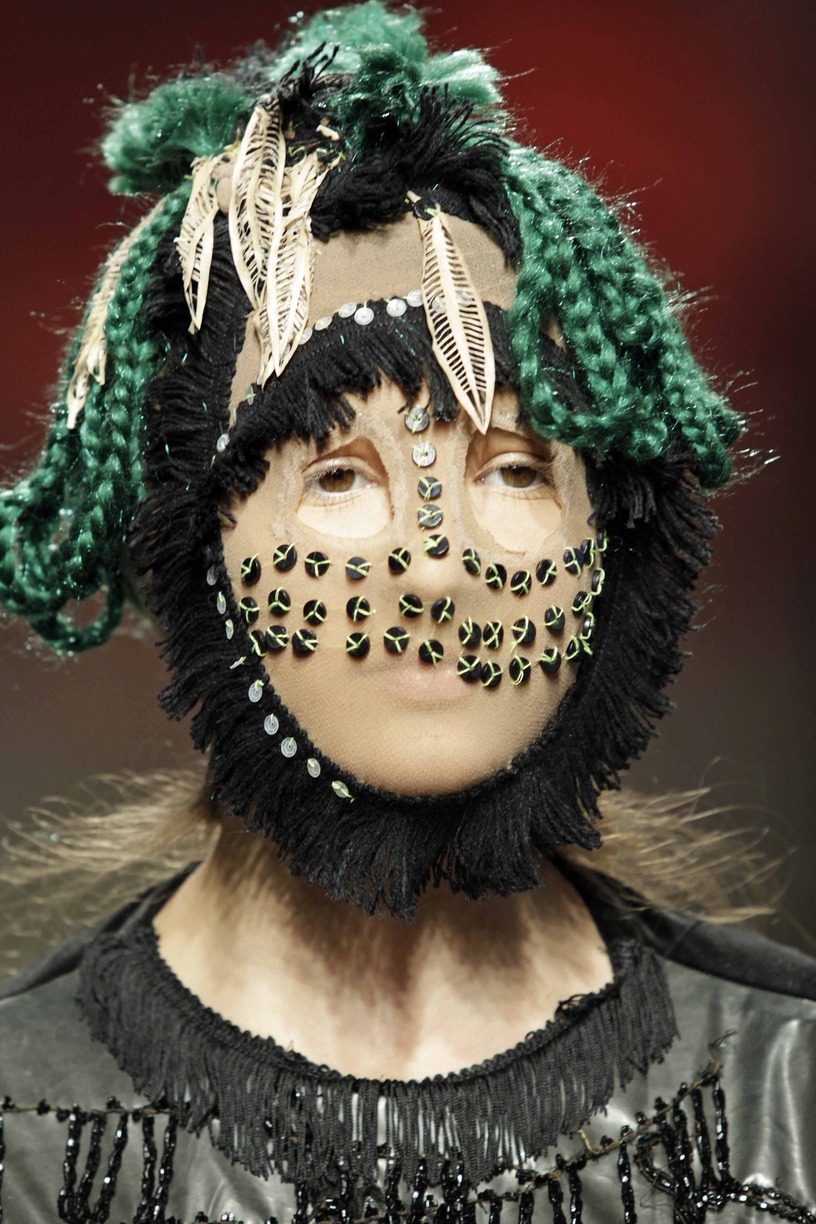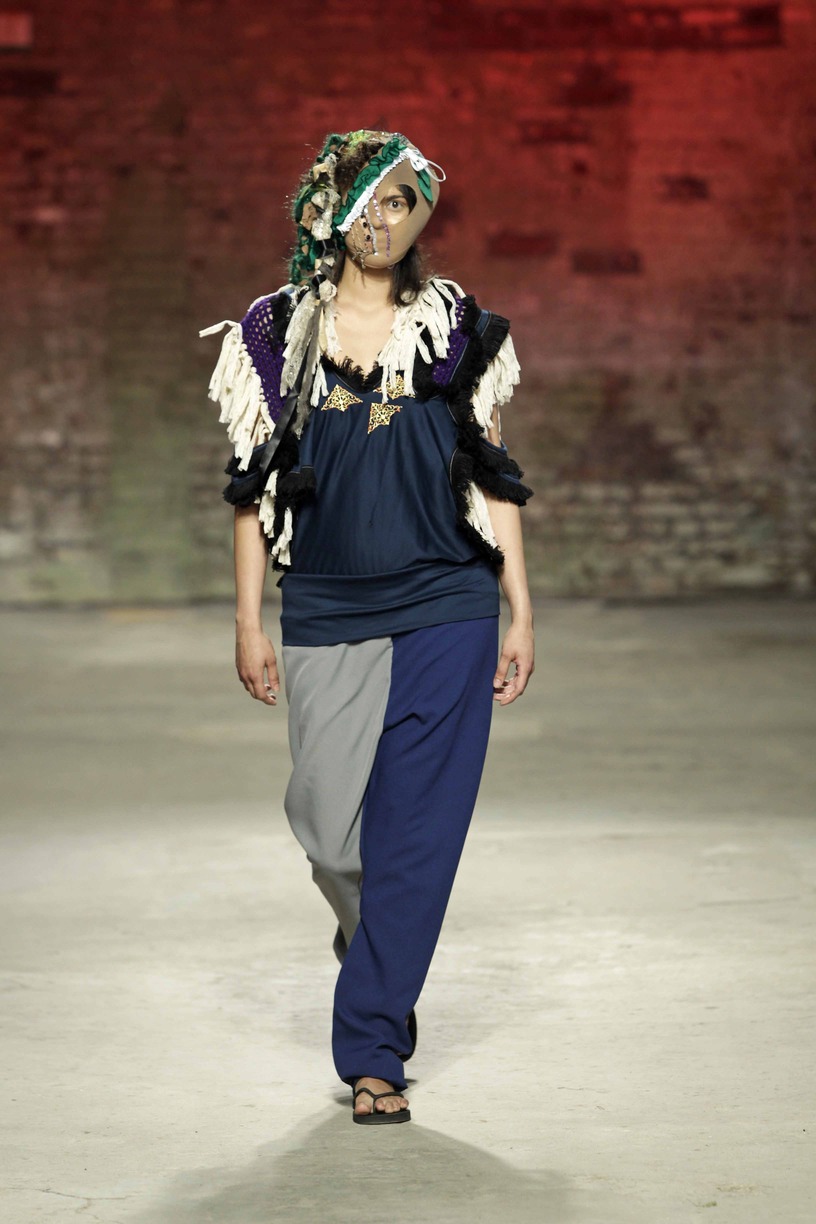Variations Chamanes
Variations Chamanes is the first Collection I presented during a Fashion Show at Fashion Clash Maastricht.
Shamanic variations in tableau vivant. “Staged Séance – tableau of Baroque and Ambiguous characters. The constellation of fantasy figures, the variation around shaman spirit, the rêverie. Fluorescent carriages married in a strangely comic fresco. The orbit syncs in rhythm and balance.
“Planetaria of the Shaman Variations in a tableau vivant by Daria Marchik and Tata Christiane. Staging the 13 planets as a tableau vivant of baroque and ambiguous characters. The constellation of phantasmal figures, the variation around a theme, the reverie. The colour of shadows. A powdered vision of a strangely burlesque fresco.”
Variations Chamanes at Fashionclash Maastricht 2010
FASHIONCLASH is an interdisciplinary showcase and development platform for fashion & fashion culture and a worldwide network of emerging fashion makers.
Variations Chamanes is the collection of my very first fashion show experience. Ok before that, I had done multiple fashion shows as a child in my grandmother’s living room with my sister in her garments and multicoloured kimono.
The years 2009 and 2010 were very effervescent, rich in meetings, collaborations and challenges.
Indeed, during these first years in Berlin, I met a collective of designers, founded by Nicole Roscher, with her label Von Bardonitz. She invited me to be part of their collective, The Offer. With them, I will have the opportunity to learn a lot about the structure of a label, the idea of a collection, etc., but also I will be able to participate in the collective organisation of events during the Berlin Fashion Week. It was with this collective that I first participated in FashionClash Maastricht.
Variations Chamanes Collaborations
For the collections show, I worked according to the 13 planets guide.
This collection has had many offshoots. First of all, for the show, I wanted to create masks related to this theme I had in mind, Shamanic Variations. A big cross-cutting inspiration in my work.
First of all, I collaborated with Elisa Cucinelli, then an art student in Berlin. She made flesh-coloured, laser-cut latex lace for the masks.
The series of masks has been photographed several times by Valquire Veljkovic, Madame Péripétie and Daria Marchik. The masks and a part of the collection will also be part of an installation with Roman Ermakov and Daria Marchik at the Gogol Festival in Kiev.
With this collection I also made my first collaborations with photographers for look books and editorials: Damien Vignaux and Daria Marchik.
Here you can also see more photos of the unique pieces made that year under the sign of Variations Chamanes.
Variations Chamanes Inspiration
Variations Chamanes is to be understood in the sense of variations on a theme or musical variations. The shaman is a person considered by his tribe or group as an intermediary or intercessor between humans and the spirits of nature.
Variations Chamanes dreams around these dimensions attached to the role of the shaman, “sage, therapist, counsellor, healer and seer”. The shaman is the initiate or repository of the culture, beliefs, practices of shamanism, and a potential form of ‘cultural secret’.
The influence of traditional dress and costume as magical adornments is also very important in my work. The notion of a unique, particular, magical garment.
Variations Chamanes because, as often happens, my inspiration is made up of scattered thoughts, reveries on themes, on readings, or images seen. I don’t pretend to know anything about it. On the other hand the poetic force is the source of my inspiration.
For example this type of Shaman is particularly powerful as a concept. In several cultures, a particular type of shaman exists, the shaman clown or Heyoka. Sometimes assimilated to a sacred clown. The Heyoka is both a shaman and a kind of jester: a being who speaks, acts and reacts in a way that is opposite to that of ‘normal’ people, dressing lightly when it is cold and vice versa. They are sometimes depicted sitting upside down on their horses. These sacred clowns are allowed in some cultures to desecrate things considered most sacred. “God’s fools are free “. Their transgressive behaviour and their status as outsiders have led North American anthropologists to refer to them as ‘the contraries’. They are often associated with thunder and not with an animal spirit.














































